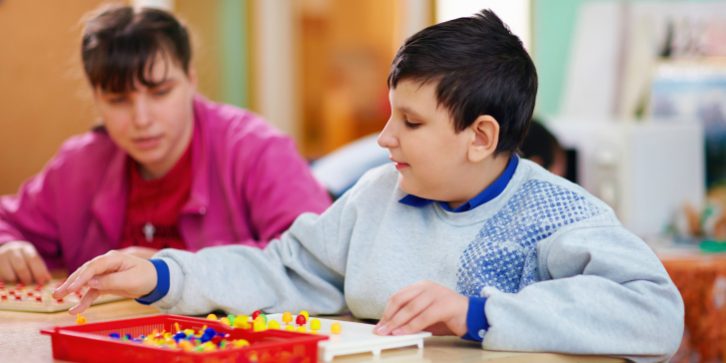by Brisbane Tutor Justin Clark
What is Multisensory Learning?
We often hear about Multisensory Learning, but what exactly is it?
When learning, we use our senses to process information. Our brain is capable of processing information using multiple senses such as visual, auditory and tactile senses along with motion, known as kinesthetic learning. The combination of learning through multiple senses is known as Multisensory learning. This style of learning is especially useful for students with learning difficulties as not only is it more engaging, it also incorporates more than just the traditional method of auditory learning. For example, many students with autism are primarily visual learners and may not be able to process a whole heap of auditory information that is presented in the traditional classroom format.
Therefore, using multiple senses can help foster more understanding when learning new concepts.
Components of Multisensory Learning
Visual Learning
We use vision from the earliest stages of reading to viewing and creating visual arts. Any creative visual design element used in teaching incorporates visual learning. This style of learning can be used when using pictures associated with beginning sounds and letters such as ‘zebra’ for the letter ‘z’ or ‘twin’ for the blend ‘tw’. We can also use it when creating a visual map through brainstorming about a particular topic. Visual aids help to supplement auditory learning.
Auditory Learning
This style of learning incorporates the traditional style of the teacher speaking when teaching concepts that are used in many classrooms. However, it involves more than just this traditional style. Auditory learning includes speaking when learning phonological awareness, which is the knowledge of sound patterns in how students pronounce words when they’re using rhyming patterns and manipulating sounds in words. Auditory learning also includes the use of music, singing, lyrics, clapping and dialogue. Anything that involves the ear is auditory learning.
Tactile Learning
This style of learning is all about touch. It can often overlap with kinesthetic learning as tactile learning techniques are more likely to engage fine motor skills. Examples of tactile learning include writing in sand or finger painting, using clay, using magnetic foam letters to form words or manipulate blends, rolling dice, coins or using puzzles. Educational games that require touch or manipulation all involve tactile learning.
Kinesthetic Learning
This style of learning involves movement and motion using fine and gross motor skills. Examples of this style of learning involve moving around on a large number mat which incorporates counting. Students can begin at a number with the teacher saying what is the number and 5 more? The student then counts out loud while moving from number to number on the number mat. Various alternatives to this can be performed.
This is a far better method of learning than sitting at a desk doing worksheets or the two can be combined, especially when learning a new concept such as addition with regrouping. Therefore, anything that connects body movement to learning is kinesthetic and so can involve teaching a whole range of concepts. It’s worth noting too that multisensory learning often incorporates most or all of the senses in one learning activity.
Multisensory Learning and Learning Difficulties
Multisensory learning is ideal for students with learning difficulties, as it incorporates the use of multiple senses rather than just auditory learning. As a result, it can help foster learning engagement for students that have been frustrated and disengaged with traditional learning styles. It provides more ways for understanding new information, to retain this information and to recall it at a later stage. For the students themselves, it’s more enjoyable which helps create positive learning experiences. This is a key component for those students who’ve had bad experiences at school and negative associations when it comes to learning.
Many students can struggle in learning as the traditional method of teaching is often more beneficial to auditory learners. These students need to be re-engaged in learning as it does not mean that they’re lazy or not interested. Multisensory learning focuses on every learning style and can trigger all the senses through one activity. This method of teaching has the ability to engage almost any student and should be part of any quality teaching practice.
This article was written by Justin Clarke who is a Brisbane tutor and provides tutoring for children with learning difficulties in Brisbane. If your child has Aspergers and you are looking for an Asperger’s tutor, Justin’s experience and specialised knowledge make him uniquely qualified to help children with Aspergers.

Justin Clark, Private Brisbane Tutor


